Today is an interview with Kieran Schnabel, a music thanatologist with SacredFlight (a not-for-profit charitable organization of certified music thanatologists). Kieran is located in Oregon, and grew up practicing and studying music. He is now a full time music thanatologist, and was kind enough to share some of his story — along with more information on music thanatology’s mission and practice — with SevenPonds.
Augusta: Hi Kieran, thank you so much for talking to SevenPonds! First and foremost, how would you describe music thanatology?
Kieran: Well, when I’m just talking to people about it without much jargon, when I’m just talking to people and to their families, I say it’s a musical specialty where we bring music in to support the patient and their families in the time of death and as they die. And generally it’s toward the very end of life, but it can be longer, any time generally when someone is on hospice. We generally serve the population that’s at the very end of life. What’s interesting about music thanatology, what’s different from a lot of other music specialties, is that we don’t often use familiar music, and we don’t generally use entire pieces of music. We use the pieces of music, such as rhythm, melody, or lower registers of sound, low notes, high notes, tambour, you know, all those elements, and we decide in the moment — based on what we’re observing in the patient and the family — how to use those pieces to support them in their process. And we’re not trying to fix anything that’s going on, with either the patient or the family. We’re just trying to support them where they are, which I love. The idea is always to support, not to influence their decision making in any way. You go in, and you take a look at what’s going on and you do the best to support them however you can with music.
Augusta: How did you get involved with music thanatology, and what made you want to pursue a career in it?
Kieran: I began with going to school for music. I went and got a masters of vocal performance from the University of Oregon, and I had in mind to keep going and get a graduate degree in choral conducting. But, through my studies, I realized I didn’t want to make a career on the stage. I’ve seen and met a lot of people in the performing arts who went on stage, got under the lights, got in front of all those people, and it just…it just fed them something that they really, really craved. And they totally lit up and they thrived. And for me it wasn’t that way. At first I had stage fright, and you know you kind of work through that and keep going, and then you become confident in what you’re doing. And I did that. And I could’ve gone on — my teachers wanted me to keep going in performance — but I ended up feeling like I wasn’t one of those people who really, really enjoyed being on stage. So then I decided that I still needed to find a way to use music in my career, because music was absolutely my passion, and I felt like I had something to offer. I was exploring my options and I came up with either music therapy or music thanatology as something to pursue. I went on and found the music thanatology program, which is put on by Lane Community College — or, that’s who hosted it. It’s a two-year, graduate level program and I did a lot of internship hours, clinical hours in a hospital setting with a mentor, then hours on my own, and that was great. It’s definitely a lot different than being on stage and offering music as a performance.
Augusta: I noticed something on Sacred Flight’s website, mentioning how a music thanatologist responds musically moment by moment during a vigil. That’s so amazing. How do you even go about doing that? Have you just gotten to a place where you can feel what you need to do? Is it intuitive?
Kieran: Yeah, it’s a really interesting thing to break down how that works. But, in essence, what we do is constantly try and observe, to watch for any signs of things we can use to help influence our choices musically. It’s a constant state of decision-making: Where is this music going? How can I choose what’s best suited to this moment and to this patient? That was a really interesting part of training, because I think we have a natural inclination to try and fix any problems that we see.
Augusta: Sure, it’s human nature I suppose.
Kieran: Right, exactly. But we’re not here to do that. We’re not trying to fix something — even educating people on that is difficult. People will ask us to come in because patients are having trouble with their breathing. And often music thanatology can make a patient’s breathing even out or become easier. It’s a common thing that happens with music. I think it can be tied to all the rhythms of the body. Breathing is a very obvious rhythm of the body, and music has rhythm, even when you make it as arrhythmic as possible, it’s still possible for it to influence breathing. If you put two things near each other that have similar enough rhythms they’ll synchronize. (Laughs) Sorry I got off topic there! But the idea is that we get called in to deal with things like that when it’s not really our purpose – we’re not going in with the goal to try and fix things, which is the biggest difference between music thanatology and music therapy. We come in to support a patient in their process from life to death.
Augusta: As far as the music goes, I know you said it’s never well-known pieces or whole pieces. But what instruments are usually used? Does that depend on the music thanatologist themselves? What’s the norm and why?
Kieran: The instruments used are traditionally just harp and voice. That’s generally how it’s practiced. I think it’s going to evolve and probably already has. I use to serve kids in a children’s hospital, and I wasn’t working for an organization that would call me a music thanatologist. But I shared some of my experiences doing that work with the music thanatology community and told them, “This is what I’m doing and I believe this is music thanatology as well.” And when I was playing for those kids and their families, I would play familiar songs. I would take requests. I played on the ukulele and I sang. And I think that, in terms of the mission of what music thanatology is, it’s essentially being fulfilled. I don’t think it matters what instruments really, but harp and voice are the traditional ones. As long as it meets the needs of the patient and family as they transition. But, in regards to the music, the reason we tend to play unfamiliar music is because, if you play music that’s familiar to someone, it grabs their conscious mind. But if someone were to play music around you that didn’t have words or used words that you didn’t understand or know — if it’s unfamiliar — it doesn’t grab your attention as much. And then you’re not thinking about what they’re saying, you’re not distracted. The reason we generally use unfamiliar music is that we’re offering support without asking the person something in return. We don’t necessarily want to grab their attention. It isn’t a performance.
Augusta: Generally will you play for a patient and a family once, or will you ever play multiple times?
Kieran: It depends, because sometimes we get called in to play for someone when they’re within a few hours of death, or a couple of days from death, in which case we probably only see them once. But sometimes we get called in and someone lives for another year or a few more years, and there have been times when we’ve seen patients five or six times, because they feel the music is so wonderful to them that they have us back again and again.
Augusta: How long does a vigil generally last or does that also depend?
Kieran: It really does depend. The music generally goes for a half hour to an hour, and there are times when it’s shorter and you have to work with whatever’s going on around you. And sometimes the call of nature comes right in the middle.
Augusta: It seems like death and music have been linked for hundreds, if not thousands of years. What are your thoughts on that?
Kieran: Yeah, you know, music and death have had a relationship for a long, long time, in almost every culture. It’s pretty amazing, because you can look all the way back to medieval times and find music in old Roman Catholic chants and taking care of people at the end of life. And you can go back to Native American rituals and find the same thing – shamans used music to take care of their dying. It’s just kind of crazy to look around the world and see it in almost every culture. Music has been a part of taking care of the dead and dying for so long. It’s great. It shows the foundation of where all this came from. It’s almost funny that it hasn’t come about sooner.
Augusta: That’s what I was thinking! It does seem strange that music thanatology isn’t something everyone knows about and uses.
Kieran: Yeah, in a lot of ways it does seem like music has been relegated to post-death. But if you look a ways back, in so many cultures, it’s very common for music to be used in taking care of the person as they’re nearing death. And also as a way for the community to interact with the person who is dying. Often times you’ll see, if a traditional music thanatologist isn’t there, a family themselves will take up the role all on their own. They’ll gather around their dying loved one and often sit close and hold hands, and they’ll sing. They’ll sing songs that are meaningful to them – either religious or not – and it brings them together and brings them to a place that helps to grieve and process the event. It’s a very natural thing that people have done for so, so long. Of course, our world is changing, and people spend less time interacting with each other. What with computers and phones and everything like that. But at the same time, in these moments, when these sorts of events happen, you still see, I think, what comes naturally to almost everyone. To come together, to have some conversation, to somehow find a place to hold space for each other, to support each other, to comfort each other — and music is a very natural part of that.
Augusta: Do you have any specific memories from your time as a music thanatologist you’d like to share?
Kieran: I can tell you a quick story if you’d like, of one vigil that really stands out in my mind.
Augusta: I’d love that.
Kieran: It’s one that I did a few months ago, just after I joined SacredFlight and it took place at the patient’s house. One of my favorite things about becoming a music thanatologist is that I get to go to people’s houses where things are most natural and sort of settled and holistic, because they’re in their own homes, surrounded by their own families. So I love that, and that’s where this was.
And the patient was an elderly gentleman, not extremely old though, probably in his mid-60s or early 70s. He was pretty ill, but he was also completely in sound mind and still mobile. It was one of those things, that if you saw someone in his position on the street, you’d never know they were within days of their death. Just kind of unbelievable to the general eye. But anyway, I went in and introduced myself, and he said he was afraid — he wasn’t ready to go. He didn’t want to leave his family, his wife, his children, his grandchildren. And one of his children was there with two granddaughters, and we got set up in the room with his bed and they sat down and immediately one of his granddaughters went down and just laid down in bed with him. And she snuggled up right against him, and he held her in the crook of his arm and I played the vigil. And the family cried, and it was just beautiful to see him with his granddaughter laying there. It was a gorgeous sight. And at the end of the vigil he said, “You’ve brought me peace. In my soul.”
And that’s always stuck with me, just knowing that music can sometimes offer some comfort existentially for the anxiety of death and what’s over on the other side. Sometimes music can offer calm in the face of the unknown. I think music soothes the very frightened aspect of ourselves as we come toward the end of life.
Augusta: That’s so beautiful. I’m crying over here now.
Kieran: Don’t worry, that day I was crying too.
Augusta: That’s just so amazing, what an incredible thing to be able to do for somebody.
Kieran: Yeah that was just one experience out of many that was really touching and wonderful.
Augusta: As far as SacredFlight goes, is there anything readers should know that sets it apart?
Kieran: I think the thing that sets SacredFlight apart is that there aren’t many stand alone music thanatologist practices. There are individual practitioners but not really practices. And a lot of music thanatologists are directly employed by a hospice or a hospital, so the unique thing about SacredFlight is that it’s stand-alone and it serves many hospitals and hospices, and the community at large in the greater Portland area.
Augusta: Is there somewhere people can find out more about SacredFlight and about you and music thanatology?
Kieran: I think the two would be sacredflight.org and also mtai.org. That one’s great because it has a contact list for music thanatologists worldwide. And there’s not a ton of us yet, so it’s kind of a cool thing to be able to find people and learn more about what we do.
Augusta: Thank you so much for talking to me – it’s been so wonderful and I’ve really enjoyed learning about music thanatology and your experience. It’s very inspiring.
Kieran: Aw you’re welcome, thank you!

 How Can Music Provide Comfort in End of Life? An Interview with Kieran Schnabel, Part One
How Can Music Provide Comfort in End of Life? An Interview with Kieran Schnabel, Part One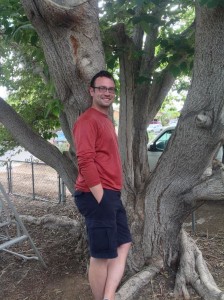

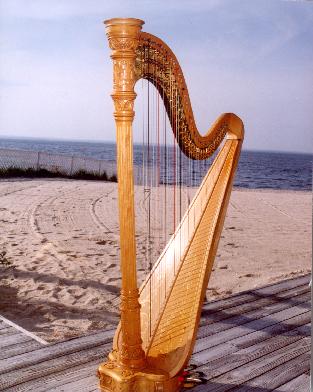
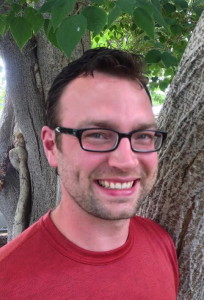
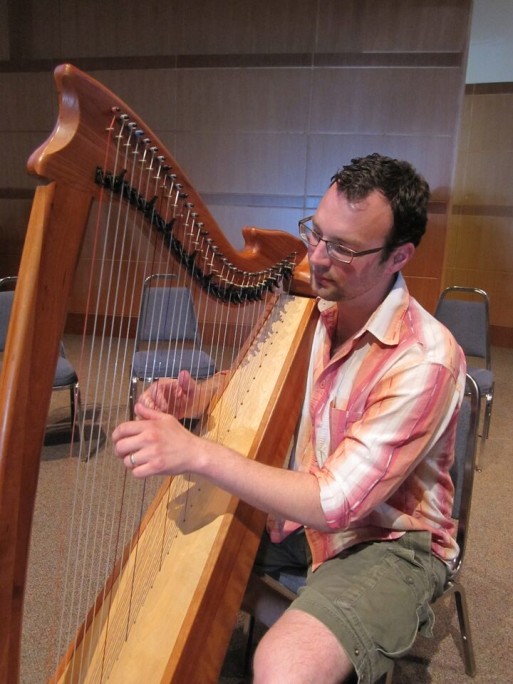



 Having an Estate Plan Is Essential – So Is Discussing It With Your Children
Having an Estate Plan Is Essential – So Is Discussing It With Your Children
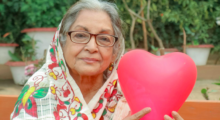
 “Summons” by Aurora Levins Morales
“Summons” by Aurora Levins Morales














